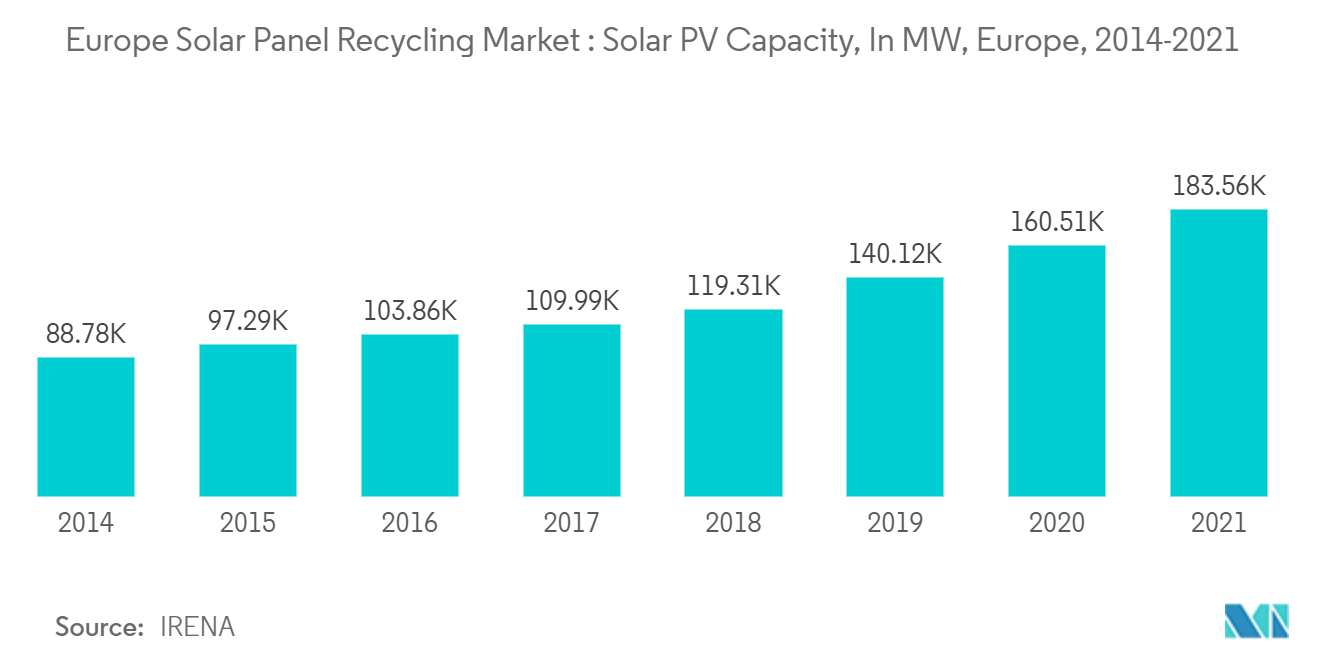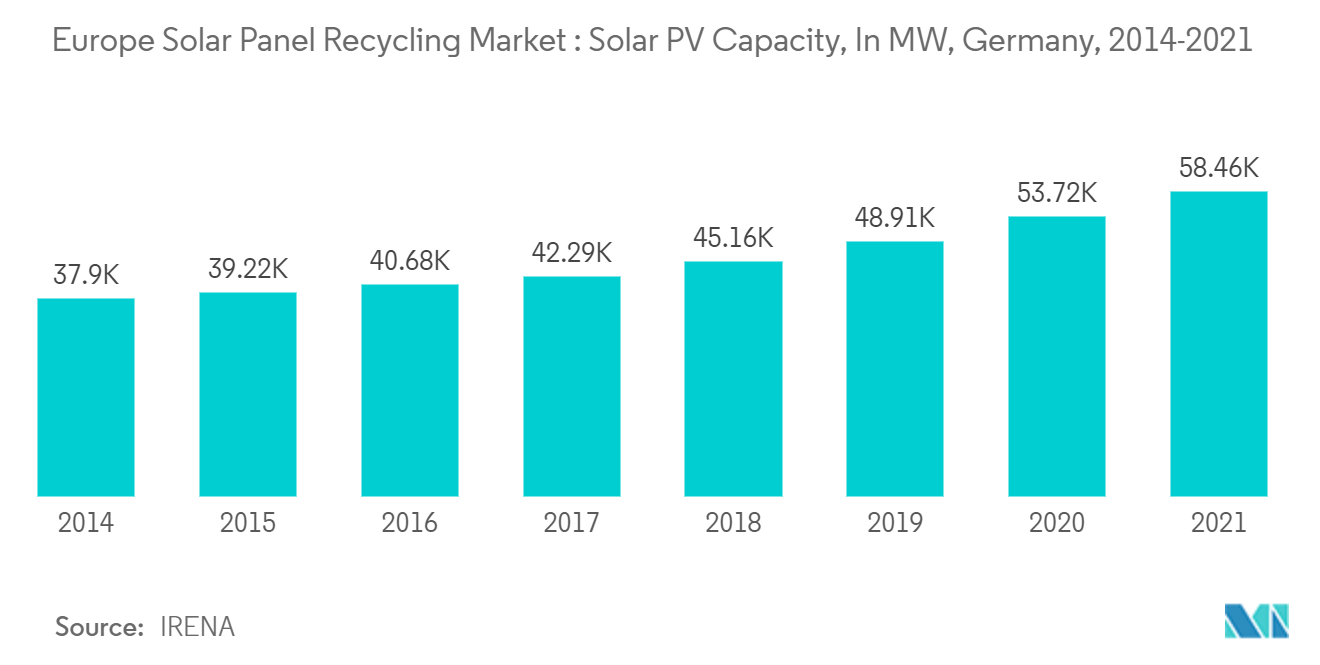Market Trends of Europe Solar Panel Recycling Industry
This section covers the major market trends shaping the Europe Solar Panel Recycling Market according to our research experts:
Crystalline Silicon to Dominate the Market
- An aluminum frame, glass, copper wire, polymer layers, a back sheet, silicon solar cells, and a plastic junction box are used to build crystalline-silicon solar panels. Although the polymer layers protect the panel from the elements, they also make recycling and disassembling the panel challenging because high temperatures are frequently needed to remove the glue.
- Moreover, laboratory energy conversion efficiency for single-crystal and multi-crystalline silicon photovoltaic cells is over 25% and over 20%, respectively. The benefits of using crystalline silicon include reliability as crystalline silicon cells reach module lifetimes of 25+ years and exhibit little long-term degradation and easy availability of silicon as it is the second most abundant element in earth's crust.
- By 2030, around USD 450 million will be the total global worth of recoverable raw materials from end-of-life panels, which is equal to the price of raw materials required to make around 60 million new panels. By diverting solar panels from landfills to recycling, space is saved in landfills, and the value of the raw materials is also realized.
- According to the WEEE Directive, European nations must have PV waste management policies that hold Producers accountable for collecting and recycling the panels they sell. These regulations have two main objectives. First, it pushes the market to create goods that require less raw material and are easier to recycle. Second, it encourages producers to include the cost of product collection and end-of-life care in the price customers pay for their goods.
- In 2021, Europe's total solar photovoltaic capacity accounted for 183.5 thousand MW. The PV capacity is expected to rise during the forecast period. This rapid increase in panel use and government policies for recycling panels necessitates responsible, industrial-scale recycling and disposal processes driving the solar panel recycling market.
- Therefore, the crystalline silicon segment is expected to dominate the market because its usage benefits more than the other segments during the forecast period.

Germany to Dominate the Market
- Germany is expected to dominate the solar panel recycling market as the country has the majority of solar PV capacity in Europe. Moreover, the country's government has set a target of raising its solar power capacity to 200GW by 2030, for which the government is planning to increase solar tenders to 20GW.
- Moreover, Germany's capacity will increase roughly eight times, from slightly over 50 GW in 2020 to about 415 GW by the middle of the century. The yearly capacity expansion for both solar and wind power must reach at least 5 GW to meet the 2030 target of a 65 % renewable share in energy consumption. Thus, the increase in solar capacity will lead to more solar panel installation creating an opportunity for the solar panel recycling market in the forecast period.
- For the recycling of photovoltaic (PV) modules that have reached the end of their useful lives, a highly effective and unique technology is being developed under the project supervision of Veolia Germany. Along with collaborating businesses from the public and private sectors that are active in the PV module recycling supply chain. Through EIT RawMaterials, the European Union is funding the initiative with a total of EUR 4.8 million.
- In 2021, the total solar photovoltaic capacity of Germany accounted for 58.5 thousand MW. The PV capacity is expected to rise in the forecast period, this, in turn, will increase solar panel installation capacity thus driving the solar panel recycling market in the future.
- Therefore, owing to the above points, with the development in technology and project in PV recycling, Germany is expected to dominate the market during the forecast period.


